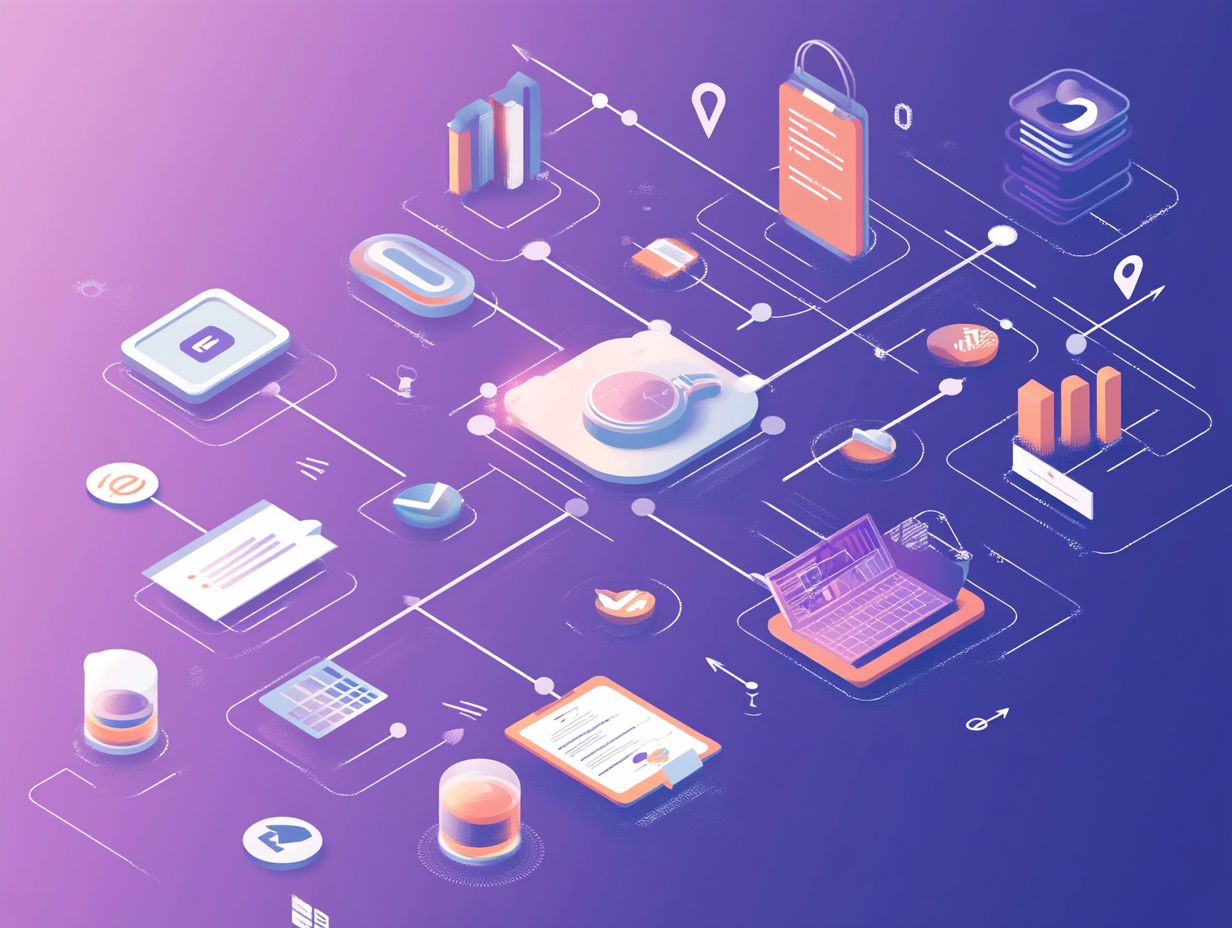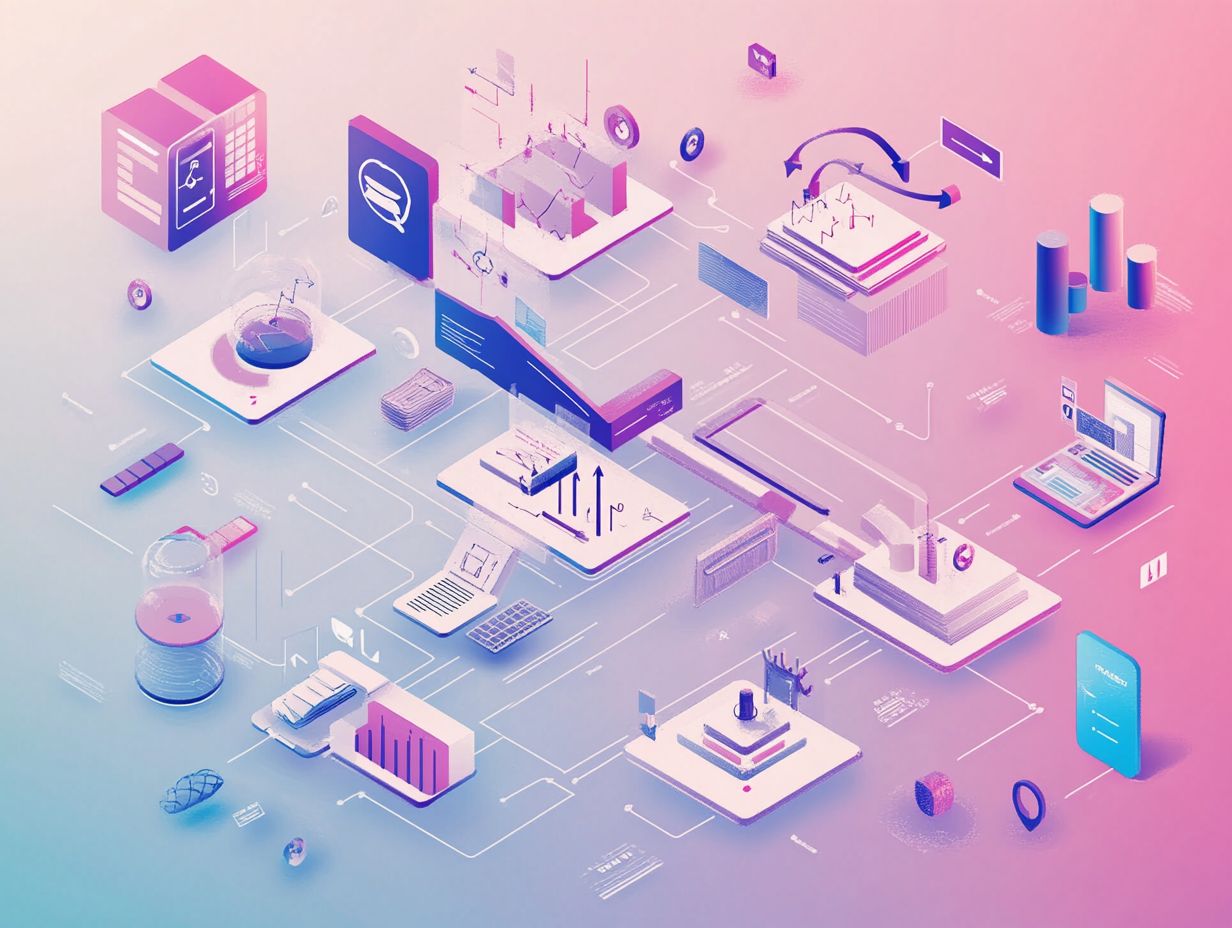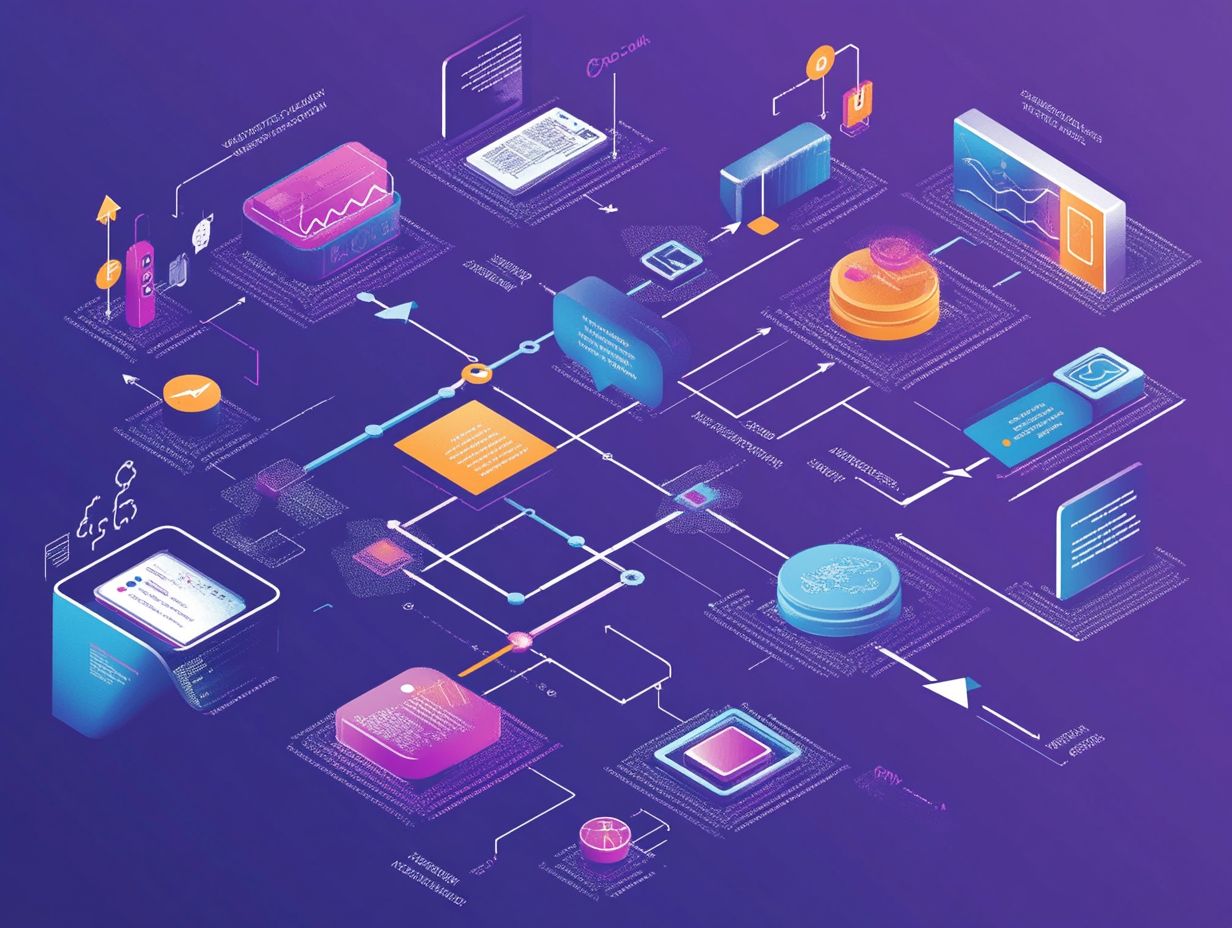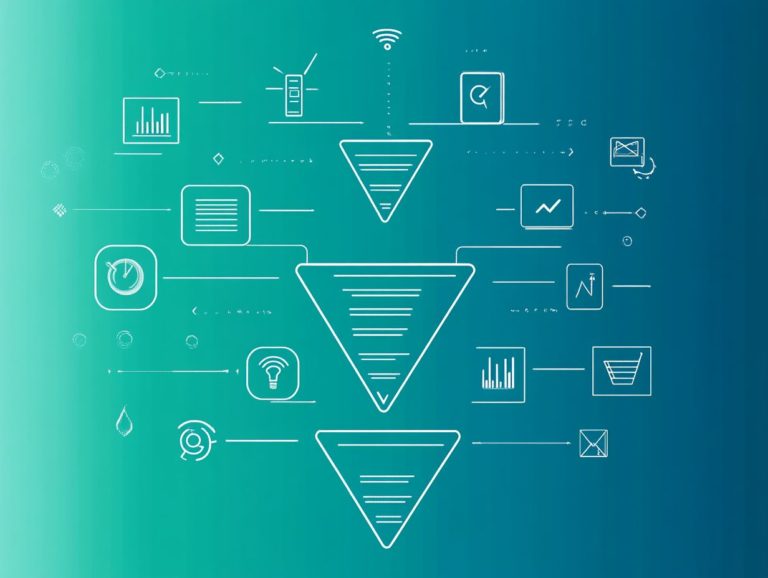Understanding the Customer Journey for Industry Leads
Let's Set Up Your Lead Generation Strategy
Fill out the form below, and our team will get in touch with you to create a tailored solution for your business.
Every interaction a customer has with your brand shapes their experience and profoundly influences their decisions.
Understanding the customer journey is essential; it outlines the stages—Awareness, Consideration, and Decision—that potential buyers traverse before committing to a purchase.
This discussion delves into journey mapping for your industry leads by pinpointing key customer touchpoints, addressing pain points, and employing strategies such as personalization and effective communication.
Explore how continuous improvement can elevate the customer journey and enhance customer satisfaction, ultimately propelling your business towards greater success.
Contents
- Key Takeaways:
- Stages of the Customer Journey
- Let's Set Up Your Lead Generation Strategy
- Mapping the Customer Journey for Industry Leads
- Let's Set Up Your Lead Generation Strategy
- Strategies to Improve the Customer Journey
- Let's Set Up Your Lead Generation Strategy
- Frequently Asked Questions
- Understanding the Customer Journey
- What is the customer journey for industry leads?
- Why is understanding the customer journey important for industry leads?
- What are the key stages in the customer journey for industry leads?
- How can businesses track and analyze the customer journey for industry leads?
- What factors can influence the customer journey for industry leads?
- How can understanding the customer journey for industry leads improve sales and revenue?
Key Takeaways:

- The customer journey refers to the stages a potential customer goes through from awareness to decision-making, encompassing their emotional journey and user actions throughout the process.
- Mapping the customer journey for industry leads involves identifying key touchpoints and understanding their pain points and needs.
- Improving the customer journey includes personalization, effective communication, and continuous enhancement.
What is the Customer Journey?
The customer journey encompasses the entire experience you go through, from becoming aware of a product or service to engaging in post-purchase interactions and ultimately advocating for the brand. This framework is essential for understanding how you, as an online shopper, connect with a brand across various touchpoints.
By recognizing the different stages—awareness, consideration, purchase, retention, and advocacy—you can gain insights into your interactions and emotional responses at each phase. For example, during the awareness stage, you might feel a mix of excitement and skepticism. Post-purchase, satisfaction typically takes the forefront.
Effective customer mapping involves pinpointing key touchpoints like social media, email campaigns, and in-store experiences. These elements are crucial in shaping your perceptions and influencing your decision-making. By enhancing each aspect of your buying experience, brands capture your interest and nurture lasting relationships that cultivate loyalty.
Stages of the Customer Journey
The customer journey unfolds through several essential stages, each illustrating the evolution of consumer engagement—from the moment of initial awareness to the final purchase and ongoing loyalty, marking important critical milestones.
At each stage, distinct customer touchpoints emerge, playing a vital role in shaping purchase decisions and enriching the overall buying experience, which can be influenced by user motivations.
Awareness Stage
In the awareness stage, you first encounter a product or service through various marketing channels like social media, search engines, and advertisements. This stage kicks off your journey, sparking interest and inviting you to explore!
To effectively seize this crucial moment, brands should embrace inbound marketing strategies (which focus on attracting customers through valuable content) that prioritize understanding your needs and preferences. By leveraging marketing analytics, such as website traffic data and social media engagement metrics, businesses can uncover invaluable insights into what motivates you.
For instance, if a company recognizes your growing interest in eco-friendly products, it can tailor its content to showcase its sustainability efforts. This approach not only boosts engagement but also aligns the brand with your values, fostering a deeper connection.
When brands understand your needs, they can create meaningful interactions that enhance their visibility and drive organic growth, ensuring better customer retention.
Ready to explore your customer journey? Let’s dive in!
Let's Set Up Your Lead Generation Strategy
Fill out the form below, and our team will get in touch with you to create a tailored solution for your business.
Consideration Stage
During the consideration stage, you weigh your options and gather information about various products or services. Customer feedback and reviews serve as your guiding stars in this decision-making process.
This stage significantly affects your emotional journey as you navigate through different user flows. Understanding how customer feedback shapes your perceptions is vital for businesses that want to enhance your satisfaction.
By actively encouraging and analyzing feedback, businesses can identify any pain points in your shopping experience, allowing them to address your concerns promptly. Creating engagement opportunities through personalized interactions, such as reaching out for reviews after your purchase, fosters a sense of community and trust.
Improving response times and providing clear product details are effective strategies to enhance your overall experience. These efforts guide you toward informed decisions and boost your confidence in the brand.
Decision Stage

The decision stage is where you, the online shopper, finalize your purchase choices. You select products or services after carefully evaluating the options available to you.
This phase often encompasses critical milestones that can greatly influence customer retention and future loyalty. Factors like competitive pricing, diverse service options, and compelling unique selling propositions steer this process.
The perceived value of customer care is crucial; a positive experience can easily tip the scales in favor of a purchase. Businesses that strive to enhance their customer service not only maximize your satisfaction but also boost their conversion rates.
By addressing common concerns and personalizing your shopping journey, businesses foster a sense of trust and reliability. Ultimately, this leads to repeat business and strengthens customer relationships, which are essential elements in today’s fiercely competitive marketplace. These factors impact overall customer success.
Mapping the Customer Journey for Industry Leads
Mapping the customer journey for industry leads is an important task that enables you to visualize customer interactions and experiences across various touchpoints. This clarity empowers you to make swift, impactful marketing decisions!
By adopting this analytical approach, you gain invaluable insights into user behavior, allowing you to optimize engagement opportunities at every stage of the buying process.
Identifying Key Touchpoints
Identifying key touchpoints is essential for you to grasp how customers interact with your brand. These touchpoints act as engagement opportunities that profoundly influence customer behavior and satisfaction levels.
You can connect with your audience through various channels, such as social media platforms, websites, email communications, and in-store experiences. Each interaction shapes perceptions and plays a pivotal role in establishing lasting relationships.
For instance, a seamless online user interface can elevate engagement rates, while positive in-person experiences nurture brand loyalty. It’s vital to ensure you strategically optimize these touchpoints, keeping them consistent and relevant.
By doing so, you enhance the overall customer experience, cultivate trust, and promote repeat business in an increasingly competitive landscape.
Let's Set Up Your Lead Generation Strategy
Fill out the form below, and our team will get in touch with you to create a tailored solution for your business.
Understanding Pain Points and Needs
Understanding your customers’ pain points and needs is essential for improving your offerings and enhancing satisfaction. By identifying the challenges they face, you can develop effective retention strategies that truly address their concerns.
Many customers become frustrated during lengthy wait times for support, which can tarnish their perception of your brand. Introducing more efficient service options, such as live chat or automated responses, alleviates this pain point and streamlines the user experience.
Recognizing that customers often desire personalized interactions opens the door to tailored solutions that boost engagement and loyalty. Addressing these common hurdles not only satisfies immediate user motivations but also fosters a more inclusive atmosphere, leading to a significantly improved overall customer experience.
Strategies to Improve the Customer Journey
Implementing strategies to refine the customer journey is crucial for you if you aim to enhance customer satisfaction and cultivate brand loyalty. By prioritizing personalization, ensuring effective communication, and committing to continuous improvement, you can significantly elevate the customer journey and boost overall customer engagement.
These focused efforts will not only resonate with your audience but also pave the way for lasting relationships with your brand.
Personalization and Customization

Personalization and customization are key elements in elevating your customer journey, allowing brands to tailor experiences specifically to your needs and preferences. This approach enhances your overall experience and fosters a deeper emotional connection.
By using customer data and insights, businesses can strategically identify your patterns and preferences. This enables them to create offerings that truly resonate with you. For instance, when they analyze your purchasing behavior and engagement metrics, brands can craft targeted marketing campaigns that speak to you on a personal level. This emotional connection is crucial; when you feel understood and valued, your loyalty naturally deepens.
As a result, this loyalty leads to repeat business, enhances brand advocacy, and drives long-term success, showcasing the profound impact of effective personalization strategies.
Effective Communication and Follow-up
Effective communication and timely follow-up are crucial for ensuring you have a positive customer experience, reinforcing your trust and satisfaction. This proactive approach addresses potential concerns and invites your valuable feedback.
In today’s competitive landscape, maintaining clear communication throughout your customer journey is essential. Whether you’re making initial inquiries or following up after a purchase, customer service plays a vital role in promptly addressing any issues that arise.
When representatives provide clear updates and respond to inquiries efficiently, you feel valued and understood, which naturally fosters loyalty. Implementing follow-up strategies, like personalized emails or feedback surveys, enhances your experience by demonstrating a commitment to continuous improvement.
This two-way dialogue resolves problems and strengthens your relationships, ultimately leading to higher retention rates and positive word-of-mouth referrals.
Continuous Improvement and Adaptation
Continuous improvement and adaptation are essential for sustaining a positive customer journey, enabling you to respond effectively to shifting customer needs and preferences. By using insights based on customer data, you can make informed adjustments to your strategies.
This process involves regularly evaluating customer feedback and performance metrics, ensuring that the voice of the customer remains central to your decision-making. Understanding shifts in customer sentiment gives you a distinct advantage, allowing your brand to stay agile in a highly competitive landscape.
Let's Set Up Your Lead Generation Strategy
Fill out the form below, and our team will get in touch with you to create a tailored solution for your business.
By actively monitoring trends and engaging with your patrons through surveys and feedback channels, you can promptly address issues and enhance overall satisfaction levels. Ultimately, creating a vibrant culture that embraces flexibility leads to meaningful improvements in customer relationships, which is essential for long-term success.
Frequently Asked Questions
Understanding the Customer Journey
What is the customer journey for industry leads?
The customer journey for industry leads refers to the steps or stages a potential customer goes through before making a purchase decision in a specific industry. It can include awareness, consideration, evaluation, and ultimately conversion into a paying customer.
For more information on implementing these strategies, feel free to contact us!
Why is understanding the customer journey important for industry leads?

Understanding the customer journey is essential for businesses. It helps identify pain points and preferences of potential customers.
This enables tailored marketing and sales strategies that effectively convert leads.
What are the key stages in the customer journey for industry leads?
The customer journey generally includes awareness, consideration, evaluation, and conversion. Each stage may vary based on industry and audience.
How can businesses track and analyze the customer journey for industry leads?
Businesses can track the customer journey using surveys, website analytics, social media monitoring, and sales data. These methods provide insights into customer behavior.
What factors can influence the customer journey for industry leads?
Several factors influence the customer journey, including needs, preferences, budget, competitors, and external events. Businesses should consider these when planning strategies.
How can understanding the customer journey for industry leads improve sales and revenue?
Understanding the customer journey helps identify and address pain points. This leads to tailored messaging that meets customer needs, boosting conversion rates.
As a result, you could see a significant increase in sales and revenue!






